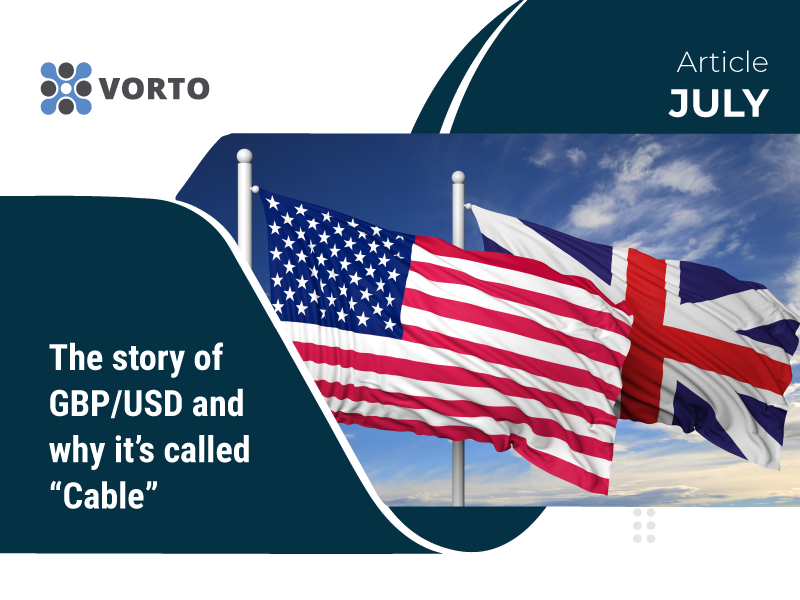Why the GBP/USD Currency Pairing is Called “Cable”
The GBP/USD currency pair represents the British pound sterling against the US dollar. It’s one of the most traded and well-known currency pairings in the foreign exchange market. The currency pairing is often referred to as “cable.” The origin of this term dates back to the mid-19th century and the invention of transatlantic communication.
Historical Context: The Transatlantic Telegraph Cable
The story dates back to the 1800s, when international communication was slow due to relying on ships to carry messages across the ocean. This all changed with the invention of the telegraph and the laying of the transatlantic telegraph cable. Completed in 1858, this underwater cable linked Britain and the United States, allowing for instantaneous communication between the two countries for the first time.
The Birth of “Cable”
With the introduction of the transatlantic telegraph cable, financial markets experienced a revolution. Information about currency exchange rates, which had previously taken days or even weeks to receive could now be shared almost in real-time. This technological breakthrough had a significant impact on the trading of currencies.
Traders and financial institutions in London and New York began to rely on the telegraph cable to transmit information about currency prices, market conditions, and economic news. Because of this crucial role played by the telegraph cable, the GBP/USD exchange rate started to be referred to simply as “cable.”
The Legacy of “Cable” in Modern Trading
Despite the advancements in communication technology since the 19th century, the term “cable” is still used to this day amongst forex traders. It serves as a historical reminder of the times when the telegraph cable was cutting-edge technology that facilitated international trade and finance. It is a testament to the long-standing relationship between the financial markets of London and New York, as well as the enduring impact of technological innovations.
Significance of the GBP/USD Pair
The GBP/USD pair remains one of the most significant and actively traded currency pairs in the forex market. Its nickname, “cable,” reflects not only its historical roots but also its continued importance in global finance. The pair is known for its volatility and the influence of economic data, geopolitical events, and central bank policies from both the UK and the US.
Traders and investors pay close attention to the GBP/USD pair for several reasons:
1. Economic Indicators: Key economic data from both countries, such as GDP growth, employment figures, and inflation rates, can have a significant impact on the currency pair’s value.
2. Monetary Policy: Decisions and statements from the Bank of England and the Federal Reserve are closely watched as they can influence interest rates and economic outlooks, thereby affecting the GBP/USD rate.
3. Political Events: Political stability and events such as elections, referendums (e.g., Brexit), and international relations can cause fluctuations in the exchange rate.
4. Market Sentiment: The GBP/USD pair is also influenced by broader market sentiment, including risk appetite, investor confidence, and global economic trends.
The term “cable” is a fascinating blend of historical significance and modern relevance, encapsulating the evolution of communication and its impact on financial markets. The GBP/USD pair’s nickname serves as a reminder of the pioneering days of the transatlantic telegraph cable and its transformative effect on currency trading. As one of the most traded currency pairs in the world, “cable” continues to play a central role in the global forex market, connecting traders across continents much like the original telegraph cable did over a century and a half ago.
